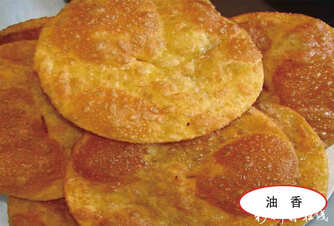
The Historical Origins of Youxiang
The history of Youxiang dates back to 610 AD when the Prophet Muhammad began spreading Islamic teachings on the Arabian Peninsula. According to legend, when Muhammad and his followers arrived in Medina, they were warmly welcomed by the locals. One of the hosts, a poor man named Abu Ayyub, served Muhammad fried dough cakes and asked him to name the dish. Muhammad praised its delicious taste and named it "Youxiang," meaning "fragrant oil." This tradition quickly spread across the Arabian Peninsula and became a cherished dish for entertaining honored guests. As Islam spread, the art of making Youxiang reached China and became an important part of Chinese Muslim dietary customs.
The Unique Craft of Making Youxiang
Youxiang is a round, fried dough cake that comes in three varieties: plain, sweet, and meat-filled. The primary ingredients include flour, salt, alkali, and vegetable oil, while additional ingredients such as brown sugar, eggs, honey, nutmeg powder, mint leaf powder, and meat filling can be added to suit different tastes. Although the preparation process appears simple, it must strictly adhere to Halal cleanliness standards.
First, the dough is kneaded and shaped into round cakes about the size of a bowl, sometimes with a few slits cut into the surface. Then, the cakes are fried in hot oil until golden brown and soft. The resulting Youxiang is reddish-brown, aromatic, and tender, making it irresistible.
Etiquette of Eating Youxiang
Youxiang holds significant religious importance in Muslim life, and its preparation and consumption follow specific etiquette and rituals. Typically, experienced and elder family members are responsible for frying Youxiang, and they must perform both major and minor ablutions before handling the dough. Additionally, incense is lit, and a prayer is recited before starting the frying process.
When eating Youxiang, several customs must be observed. First, it should not be referred to as "oil cake." Second, it should be broken by hand and not bitten directly. Lastly, Youxiang should be shared among people to enhance mutual affection, often being gifted or exchanged.
The Cultural Significance of Youxiang
Youxiang is more than just food; it's a cultural heritage. Among Chinese Muslims, Youxiang is used in various important occasions and religious ceremonies. For instance, during traditional religious festivals, families exchange Youxiang. It also plays a role in life events such as weddings, circumcisions, and funerals.
In funeral customs, Youxiang is prepared from the day of burial to serve guests and religious leaders who officiate the rites. It is also distributed during key remembrance days such as the third, fifth, and seventh days, the fortieth day, and anniversaries, symbolizing remembrance and respect.
Youxiang represents not only food but also faith, charity, and sharing. It is viewed as a symbol of devotion and friendship, playing an irreplaceable role in exploring Muslim values and facilitating social harmony.
In summary, Youxiang, a classic in Chinese Halal cuisine, combines rich history and profound cultural significance. Whether at family gatherings or religious ceremonies, Youxiang, with its unique flavor and symbolic meaning, remains an indispensable part of Muslim life.
Source:
Internet
This article does not represent the stance of China Arab News, does not assume legal responsibility, and the content and viewpoints expressed do not constitute any opinions.



Comments List